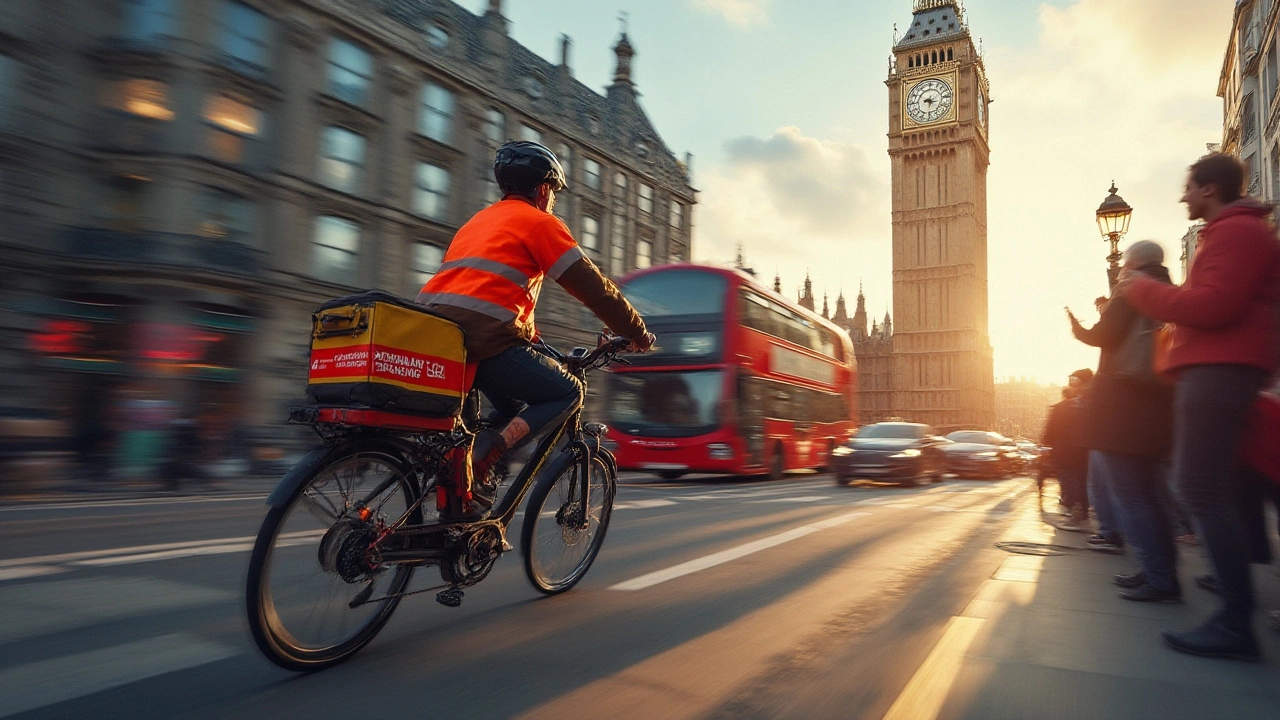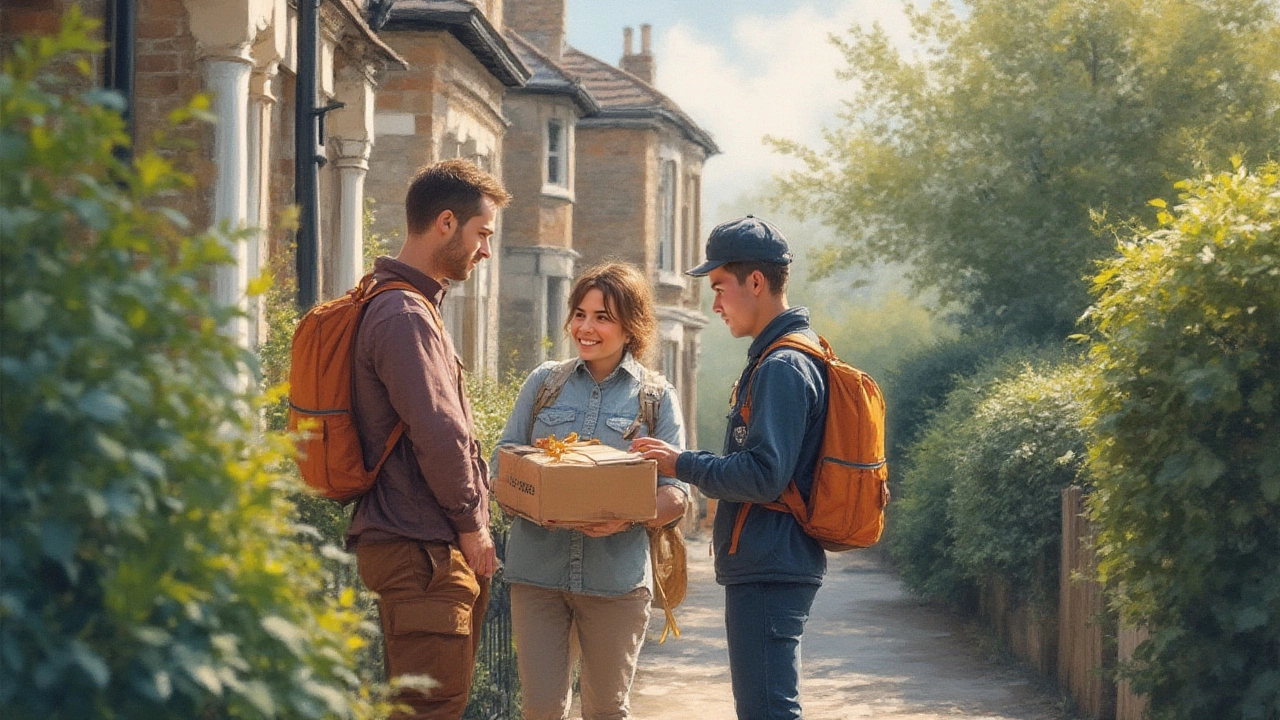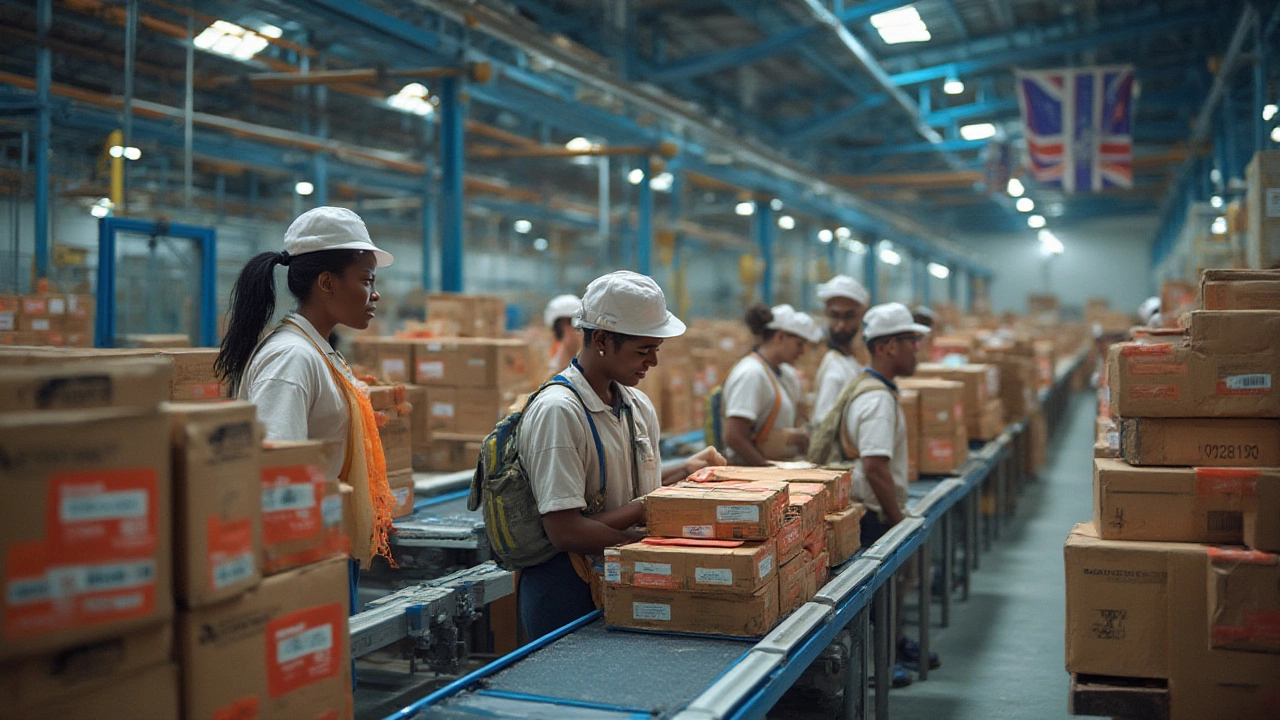Picture this: you order something online late at night, and by the time you sip your morning coffee, it’s already halfway across the city. That sense of magic isn’t magic at all—it’s the courier system working at breakneck speed. Most people only see the delivery truck rolling up, but behind every package on your doorstep, there’s a web of planning, tech, and hustle you’d never expect. Forget robots or futuristic drones (for now). The real action is a mix of human effort, crazy synchronization, and technology evolving faster than the boxes being shipped. Stuff can travel hundreds of miles in the time it takes you to binge an episode of your favorite show. Want to know what really happens after you click ‘place order’? Let’s crack open the package.
The Journey of a Package: From Pickup to Delivery
Every delivery starts way before a courier rings your bell. Once you place an order online, the merchant packs up your item and hands it to a courier—sometimes the very same day. That’s when the multiple legs of the journey kick off. The first step is pickup. In many towns and cities, drivers collect packages from dozens of sellers in quick succession, scanning each parcel to log it into the courier’s tracking system. Each scan generates a digital breadcrumb, allowing both you and the courier company to watch its every move. It’s rarely a straight trip from sender to receiver. The first stop is usually a local sorting facility, where barcode scanners read the package info and automated belts funnel it to the right pile—sometimes traveling more than a mile inside a facility just to be loaded onto the next truck. These hubs can process up to 500,000 parcels a day, especially during peak seasons like December, where volume spikes just about everywhere.
Next, your package hitches a ride to a regional distribution center. Here, tech comes into play even more. Sorting centers use real-time traffic data and route optimization algorithms to figure out exactly how deliveries should be sequenced. Couriers aren’t just grabbing packages and guessing which street to drive down—each route is carefully calculated to dodge the busiest intersections at the busiest times. Ever get a text saying “Your package is on the way”? That’s the courier’s dispatch system triggering an automated message as soon as the parcel is scanned onto a delivery vehicle. On the final leg, the driver often stops dozens (sometimes over a hundred) times in a single shift. Some routes are so tight that drivers are expected to spend only a minute per stop. Miss your delivery? That adds more complexity, with failed delivery attempts needing rescheduling and often rerouting.
| Step | What Happens |
|---|---|
| 1. Pickup | Courier takes package from sender, scans it into tracking system |
| 2. Sortation Facility | Packages sorted by destination using automated scanners |
| 3. Regional Hub | Packages rerouted to their next stop based on location algorithms |
| 4. Out for Delivery | Loaded onto a van or bike for final delivery to the recipient |
| 5. Completed Delivery | Parcel arrives at your doorstep, signature or photo verifies receipt |
Tech That Makes Delivery Happen
The humble courier’s toolkit has gone digital in a big way. Every package gets a barcode or QR code, which is the lifeblood of the whole tracking process. Without that, the system grinds to a halt. Barcode scanners automatically feed package data to massive servers in real time. That’s how you can see exactly where your delivery is, even down to which city or street it’s driving through. But it doesn’t stop there. Many courier services now use route optimization apps like RoadWarrior or proprietary algorithms that calculate the slickest routes based on weather, road closures, and last-minute pickups. Some drivers even get dynamic updates sent straight to their phones, rerouting them on the fly if traffic snarls up. Automation isn’t just about moving boxes, though; it’s about making life easier for both the courier and the customer. Smart lockers are becoming common in apartment buildings and malls, allowing drivers to do secure drop-offs 24/7—even when you’re not home.
On the backend, courier companies invest heavily in machine learning to predict delivery times more accurately. For instance, predictive analytics can flag when an area is at risk of being delayed, based on historical data—think holiday gridlocks or wild weather swings. Customer service bots have taken over many tracking inquiries, so you get instant answers to “Where’s my package?” Some companies even offer map-based live tracking, so you literally watch your package inch closer in real time. Wondering how this affects international deliveries? Customs paperwork is partly automated now too, cutting border delays. And with so much data flowing, security is a big deal. Advanced encryption and multi-factor authentication are the norm for customer accounts. Packages are tracked and verified at every step, reducing fraud and lost shipments. Recently, RFID (radio-frequency identification) tags are being tested to make scanning even faster and more foolproof, paving the way for less hands-on handling and even lower risk of mistakes.

Types of Courier Services: From Same-Day to International Shipping
Couriers aren’t just the folks delivering floral bouquets or food. The business covers just about everything that needs to get from point A to point B, fast and with care. At the local level, same-day couriers rule the urban hustle. These drivers haul legal documents, urgent replacement parts, forgotten passports, you name it. Some services even use cargo bikes for weaving through gridlocked city streets quicker than vans. Regional delivery services handle packages that don’t need to cross borders but might need to cover some serious ground fast—think overnight parcels shuttled between cities in your state. When you want a package to cross oceans, international courier giants like DHL, FedEx, and UPS step in. They coordinate pickups in your hometown and hand off shipments to partner airlines, customs agents, and local couriers halfway around the world. Courier services often have to comply with strict regulations, especially for items like batteries, lithium-ion electronics, or anything that could be labeled hazardous. And for pricey stuff like gold, art, or confidential docs, high-security courier services offer armored vehicles, tamper-proof packaging, and special tracking.
There are even white-glove couriers who specialize in the careful transport of fragile, high-value, or temperature-sensitive goods. Medicine, vaccines, and blood for hospitals are usually shipped by medical couriers who rush through traffic with refrigerated containers. Then there’s the boom in gig economy couriers. Apps like Uber Eats, DoorDash, and same-day parcel startups let just about anyone with a car, bike, or scooter sign up and start delivering. This side of the industry is growing fast, with flexible hours and low entry barriers making it popular for students or folks between jobs.
Clever Tips for Hassle-Free Delivery
If you send or receive lots of packages, a few tricks can make the whole process smoother. First off: always double-check your delivery address, including apartment numbers or gate codes. Tiny errors are one of the top causes of delivery failures. Pick a service that sends real-time updates. That way, you can plan your day around the delivery window, or even reschedule on the fly if you won’t be home. If you’re worried about porch pirates (yes, that’s a thing—US data shows over 210 million packages vanished off porches in 2024), use services with secure drop-off options like lockers or require a signature.
When sending high-value or fragile items, pay for extra insurance. It often costs less than a coffee, and it’s worth it for peace of mind if something goes wrong. Proper packaging is your friend—double box anything remotely breakable, and use lots of padding. If your item is lightweight but bulky (like pillows or jackets), check the courier’s policy on volumetric weight—that’s where they charge by space, not weight. This can catch people out with surprise costs, especially on international shipments. And if you send packages often, get a loyalty account with your preferred courier. You’ll unlock discounts, and it makes managing claims or rebookings a lot easier. Always keep every receipt, either by snapping a pic or using the courier app, so you have a digital paper trail if disputes pop up. Finally, package tracking isn’t just for buyers. Senders benefit too because they get notified right away if there’s an address problem or delay.

What the Future Holds for Couriers
Courier work isn’t standing still. In cities like Singapore and London, tiny electric vans are replacing their gas-guzzling ancestors, quietly zipping through delivery routes and cutting emissions. Companies are experimenting with sidewalk robots—think coolers on six wheels—and drones for dropping off lightweight items across busy urban streets. But despite these sci-fi changes, the largest share of packages still ride in regular vans steered by real people. The gig economy trend will likely stick around, letting folks work flexible hours for modest pay, though some countries are moving to give these workers more protections like health insurance or paid leave. Tech will keep steamrolling ahead: expect even more accurate real-time tracking, AI systems that can reroute entire fleets in seconds, and smarter security for keeping customer data safe. Personalized delivery options will grow too. Imagine being able to choose exactly what time and where a package appears, or split deliveries between home, office, or a friend’s place as your day changes.
If you live in rural areas, delivery drones or even driverless vans could make the last few miles quicker and more efficient, solving the “last mile problem” that’s long bugged the industry. But for now, couriers are real people dealing with real traffic, real weather, and sometimes, real headaches. So next time you sign for a package or wave thanks to your courier, remember the army of tech, trucks, and people who hustled to make that delivery drop right on the dot.


